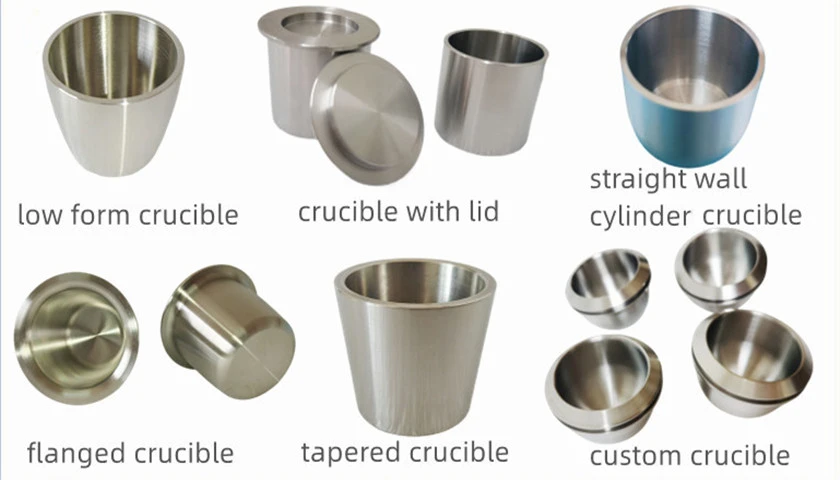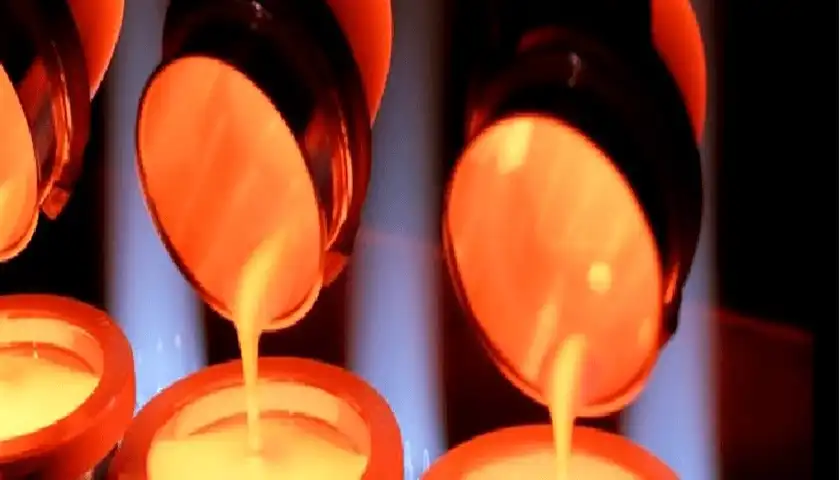Zirconium crucibles are indispensable tools in various high-temperature applications across multiple industries. These specialized containers, crafted from zirconium or zirconium-based alloys, offer exceptional resistance to heat, corrosion, and chemical reactions. In this comprehensive guide, we'll explore the diverse uses of zirconium crucibles, their unique properties, and why they're the preferred choice for many demanding processes.
Understanding Zirconium Crucibles
Composition and Properties of Zirconium Crucibles
Zirconium crucibles are typically made from high-purity zirconium or zirconium-based alloys. These materials possess remarkable characteristics that make them ideal for use in extreme conditions. Zirconium's low neutron absorption cross-section, excellent corrosion resistance, and high melting point (1855°C) contribute to its superiority in crucible manufacturing.
The unique properties of zirconium crucibles include:
- Exceptional thermal stability
- Resistance to chemical attack from molten metals and aggressive substances
- Low thermal expansion coefficient
- High mechanical strength at elevated temperatures
- Excellent thermal shock resistance
Manufacturing Process of Zirconium Crucibles
The production of zirconium crucibles involves sophisticated techniques to ensure high quality and performance. The manufacturing process typically includes:
- Powder preparation: High-purity zirconium powder is carefully processed and mixed with any necessary additives.
- Forming: The powder is shaped into the desired crucible form using techniques such as isostatic pressing or slip casting.
- Sintering: The formed crucible is subjected to high temperatures in a controlled atmosphere to densify and strengthen the material.
- Finishing: The sintered crucible undergoes final machining and polishing to achieve the required dimensions and surface quality.
Types and Sizes of Zirconium Crucibles
Zirconium crucibles come in various types and sizes to accommodate different applications and capacity requirements. Common types include:
- Cylindrical crucibles: Ideal for general-purpose use in melting and holding materials
- Tapered crucibles: Designed for easy pouring of molten materials
- Rectangular crucibles: Suitable for specific industrial processes or custom applications
- Crucible lids: Used to cover crucibles during heating or melting operations
Sizes can range from small laboratory crucibles with capacities of a few milliliters to large industrial crucibles capable of holding several liters of material.
 |
 |
Applications of Zirconium Crucibles
Zirconium Crucibles in Metallurgy
In the field of metallurgy, zirconium crucibles play a crucial role in various processes:
- Melting and alloying of reactive metals: Zirconium crucibles are ideal for handling reactive metals like titanium, hafnium, and rare earth elements due to their chemical inertness.
- Vacuum induction melting: The high purity and stability of zirconium crucibles make them suitable for vacuum melting processes, ensuring minimal contamination of the melt.
- Precision casting: Zirconium crucibles are used in the production of high-quality castings for aerospace and medical applications.
Zirconium Crucibles in Nuclear Industry
The nuclear industry relies heavily on zirconium crucibles for various applications:
- Fuel rod production: Zirconium crucibles are used in the preparation and handling of nuclear fuel materials.
- Isotope separation: The low neutron absorption properties of zirconium make these crucibles ideal for isotope separation processes.
- Waste vitrification: Zirconium crucibles are employed in the treatment and vitrification of nuclear waste materials.
Zirconium Crucibles in Chemical Industry
The chemical industry utilizes zirconium crucibles for numerous applications:
- Synthesis of high-purity chemicals: Zirconium crucibles provide a clean, non-reactive environment for producing ultra-pure chemicals.
- Handling of corrosive substances: The excellent corrosion resistance of zirconium makes these crucibles suitable for working with aggressive chemicals.
- High-temperature reactions: Zirconium crucibles can withstand extreme temperatures, making them ideal for carrying out high-temperature chemical reactions.
 |
 |
Advantages and Limitations of Zirconium Crucibles
Benefits of Using Zirconium Crucibles
Zirconium crucibles offer numerous advantages in high-temperature applications:
- Superior chemical resistance: Zirconium crucibles can withstand corrosive environments and reactive materials without degradation.
- High-temperature stability: These crucibles maintain their structural integrity and properties at extreme temperatures.
- Low contamination risk: The inert nature of zirconium minimizes the risk of contamination in sensitive processes.
- Long service life: Due to their durability and resistance to wear, zirconium crucibles often have an extended operational lifespan.
- Versatility: Zirconium crucibles can be used across various industries and applications, making them a versatile investment.
Limitations and Challenges of Zirconium Crucibles
Despite their many advantages, zirconium crucibles do have some limitations:
- Cost: Zirconium crucibles are generally more expensive than those made from other refractory materials.
- Brittleness: While strong, zirconium can be brittle and may crack if subjected to sudden temperature changes or mechanical shock.
- Oxidation at high temperatures: In oxygen-rich environments at very high temperatures, zirconium can form a protective oxide layer, which may affect its performance in certain applications.
- Limited availability: High-purity zirconium crucibles may have longer lead times due to the specialized manufacturing process.
Maintenance and Care of Zirconium Crucibles
To ensure optimal performance and longevity of zirconium crucibles, proper maintenance is essential:
- Cleaning: Carefully clean crucibles after each use to remove any residual materials.
- Inspection: Regularly inspect crucibles for signs of wear, cracks, or damage.
- Handling: Use appropriate tools and techniques when handling zirconium crucibles to prevent mechanical damage.
- Storage: Store crucibles in a clean, dry environment to prevent contamination and moisture absorption.
- Temperature control: Avoid rapid temperature changes to prevent thermal shock and potential cracking.
By following these maintenance practices, users can maximize the lifespan and performance of their zirconium crucibles, ensuring consistent results in their high-temperature processes.
Conclusion
Zirconium crucibles are invaluable tools in various industries, offering unparalleled performance in high-temperature and corrosive environments. Their unique properties make them ideal for applications ranging from metallurgy and nuclear science to chemical synthesis and advanced materials research. While they may have some limitations, the benefits of using zirconium crucibles often outweigh the challenges, particularly in processes where purity and stability are paramount.
Contact Us
For those seeking high-quality zirconium crucibles and expert guidance on their application, Shaanxi Peakrise Metal Co., Ltd. stands ready to assist. With our commitment to excellence and years of experience in non-ferrous metal manufacturing, we offer top-tier products and unparalleled support to meet your specific needs. Contact Shaanxi Peakrise Metal Co., Ltd. today at info@peakrisemetal.com to discuss your requirements and discover how our expertise can benefit your operations.
References
Johnson, A. R., & Smith, B. T. (2019). Advanced Materials for High-Temperature Applications: The Role of Zirconium Crucibles. Journal of Refractory Materials, 45(3), 267-285.
Zhang, L., & Wang, H. (2020). Zirconium in Nuclear Industry: From Fuel Rods to Waste Management. Nuclear Engineering and Technology, 52(8), 1689-1701.
Patel, R. K., & Mehta, N. S. (2018). Innovations in Metallurgical Processes: The Impact of Zirconium Crucibles on Alloy Development. Metallurgical and Materials Transactions B, 49(6), 3215-3227.
Chen, Y., & Liu, X. (2021). Chemical Resistance of Zirconium Crucibles in Aggressive Environments: A Comprehensive Review. Corrosion Science, 178, 109071.
Tanaka, M., & Yamamoto, K. (2017). Manufacturing Techniques for High-Performance Zirconium Crucibles: Advances and Challenges. International Journal of Refractory Metals and Hard Materials, 69, 215-229.
Brown, E. L., & Davis, C. M. (2022). Comparative Analysis of Crucible Materials for High-Temperature Applications: Zirconium vs. Traditional Refractories. Journal of Materials Processing Technology, 300, 117345.
